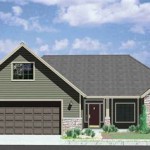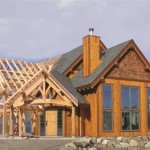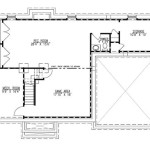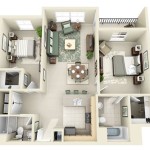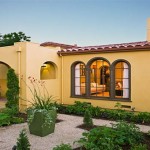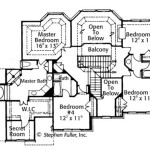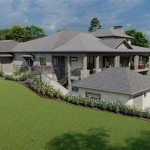Multi-Generational Home Floor Plans: Designing for Cohesion and Independence
Multi-generational living, the practice of three or more generations residing under one roof, is experiencing a resurgence. This arrangement, once common, offers numerous benefits, including shared financial responsibilities, enhanced family support, and enriched intergenerational relationships. However, successful multi-generational living hinges on careful planning and thoughtful design, particularly when it comes to the home's floor plan. A well-designed multi-generational home strikes a balance between communal spaces that encourage interaction and private areas that offer each generation a sense of independence and personal space.
Creating a floor plan that caters to the diverse needs and preferences of multiple generations requires considering a variety of factors, including the ages and mobility levels of each family member, their individual lifestyles, and their expectations for privacy and interaction. This article will explore key aspects of multi-generational home floor plans, providing insights into design strategies that foster both cohesion and independence within a shared living environment. From dedicated suites to adaptable common areas, the goal is to create a home that supports the well-being and happiness of all its residents.
Key Considerations for Multi-Generational Floor Plans
Designing for multi-generational living is not simply about adding more bedrooms or bathrooms. It involves a nuanced understanding of how different generations interact and the unique requirements of each age group. Several key considerations should guide the design process to ensure a harmonious and functional living space for everyone.
Firstly, accessibility is paramount. As family members age, their mobility may decrease, making it crucial to incorporate features that promote ease of movement throughout the home. This includes elements like wider doorways and hallways to accommodate wheelchairs or walkers, ramps instead of stairs where possible, and grab bars in bathrooms. Universal design principles, which aim to create spaces that are usable by people of all abilities, should be integrated into the floor plan from the outset.
Secondly, privacy is essential for maintaining individual well-being and healthy family dynamics. Each generation needs a space that they can call their own, where they can retreat for rest, relaxation, and personal pursuits. This might take the form of a separate suite with its own bedroom, bathroom, and living area, or simply a designated area within the home that is clearly defined and respected as private space. Adequate soundproofing is also crucial to minimize disturbances between different areas of the house.
Thirdly, communal areas should be designed to encourage interaction and shared activities. These spaces, such as the kitchen, dining room, and living room, should be large enough to accommodate the entire family comfortably. The layout should be conducive to conversation and engagement, fostering a sense of togetherness and shared community. Thoughtful planning of communal spaces can help to strengthen family bonds and create a welcoming environment for everyone.
Strategies for Incorporating Separate Living Spaces
One of the most common approaches to multi-generational home design is to incorporate a separate living space, often referred to as an "in-law suite" or "accessory dwelling unit" (ADU). This suite can be designed as a self-contained apartment with its own entrance, kitchen, bathroom, and living area, allowing the occupants a high degree of independence and privacy. There are various strategies for integrating these spaces into the overall floor plan.
A popular option is to add the suite onto an existing home, either as a ground-floor extension or by converting an existing space, such as a garage or basement. This approach can be relatively cost-effective and allows for a clear separation between the main living area and the suite. Another option is to build a separate structure on the property, such as a detached ADU in the backyard. This provides the greatest degree of privacy but may be subject to local zoning regulations and building codes.
Within the main house, creating a dedicated wing or zone for a particular generation is another effective strategy. This could involve grouping bedrooms and a shared living area together in a specific section of the house, providing a sense of ownership and control over that space. Regardless of the approach, it is important to ensure that each living space is designed to meet the specific needs of its occupants, taking into account their age, mobility, and lifestyle.
When designing separate living spaces, consider the kitchen facilities. A full kitchen allows for complete independence, while a kitchenette with a sink, refrigerator, and microwave might suffice for lighter meal preparation. Similarly, the bathroom should be designed with accessibility in mind, particularly if it will be used by elderly family members. Features such as grab bars, walk-in showers, and adjustable showerheads can significantly improve safety and comfort.
Designing Adaptable and Flexible Common Areas
While separate living spaces provide privacy and independence, common areas serve as the heart of the multi-generational home, fostering interaction and shared experiences. These spaces should be designed to be adaptable and flexible, accommodating a variety of activities and needs. The kitchen, in particular, is a central gathering place and should be designed with functionality and accessibility in mind.
A large, open-plan kitchen with ample counter space and storage is ideal for multi-generational living. Multiple workstations allow family members to cook together without feeling crowded, while accessible appliances and countertops cater to different heights and mobility levels. A spacious island can serve as a central gathering point for meal preparation, dining, and socializing.
The living room should be designed to accommodate a range of activities, from family movie nights to quiet reading sessions. Comfortable seating options, such as sofas, armchairs, and recliners, should cater to different preferences. Good lighting is essential, with a combination of natural light and adjustable artificial lighting to create a welcoming and versatile space. Consider incorporating features such as a fireplace or entertainment center to enhance the ambiance and functionality of the living room.
The dining room should be large enough to accommodate the entire family comfortably, with a table that can be extended for larger gatherings. Consider incorporating a buffet or sideboard for serving and storage. The dining room should be located near the kitchen for easy access and should be designed to create a welcoming and convivial atmosphere.
Beyond the main living areas, consider creating additional common spaces that cater to specific interests or hobbies. This could include a home office, a game room, a craft room, or an outdoor patio. These spaces can provide opportunities for family members to connect and engage in shared activities, fostering a sense of community and belonging.
Finally, storage is crucial in a multi-generational home. Each generation will have their own belongings, and it is important to provide ample storage space to avoid clutter and maintain a sense of order. This includes closet space in bedrooms, storage cabinets in common areas, and potentially a dedicated storage room or attic space. Efficient storage solutions can help to keep the home organized and comfortable for everyone.
Incorporating outdoor living spaces is a valuable addition to a multi-generational home. Patios, decks, and gardens provide opportunities for relaxation, recreation, and socializing. Consider creating a covered outdoor area that can be used year-round, as well as a dedicated gardening space for those who enjoy tending to plants. Outdoor spaces can enhance the overall quality of life for all family members and provide a natural extension of the home's living areas.
Ultimately, the key to designing successful multi-generational home floor plans lies in careful planning, open communication, and a willingness to compromise. By considering the diverse needs and preferences of each generation, and by incorporating design strategies that promote both cohesion and independence, it is possible to create a home that supports the well-being and happiness of all its residents.

Fun Functional Multigenerational House Plans Houseplans Blog Com

How To Build The Perfect Multi Generational Home Plans Included Oberer Homes

Multi Generational Homes Finding A Home For The Whole Family

Fun Functional Multigenerational House Plans Houseplans Blog Com

Multigenerational Floor Plans Are Perfect For Extended Households

Multi Gen Homes D R Horton

Best Multigenerational Homes Four Generations One Roof House Plans New Barndominium Floor

What Is A Multigenerational Home K Hovnanian Homes

Multigenerational Living Is It Right For You Wisdom Homes

Multigenerational Home Design Is It Right For You

